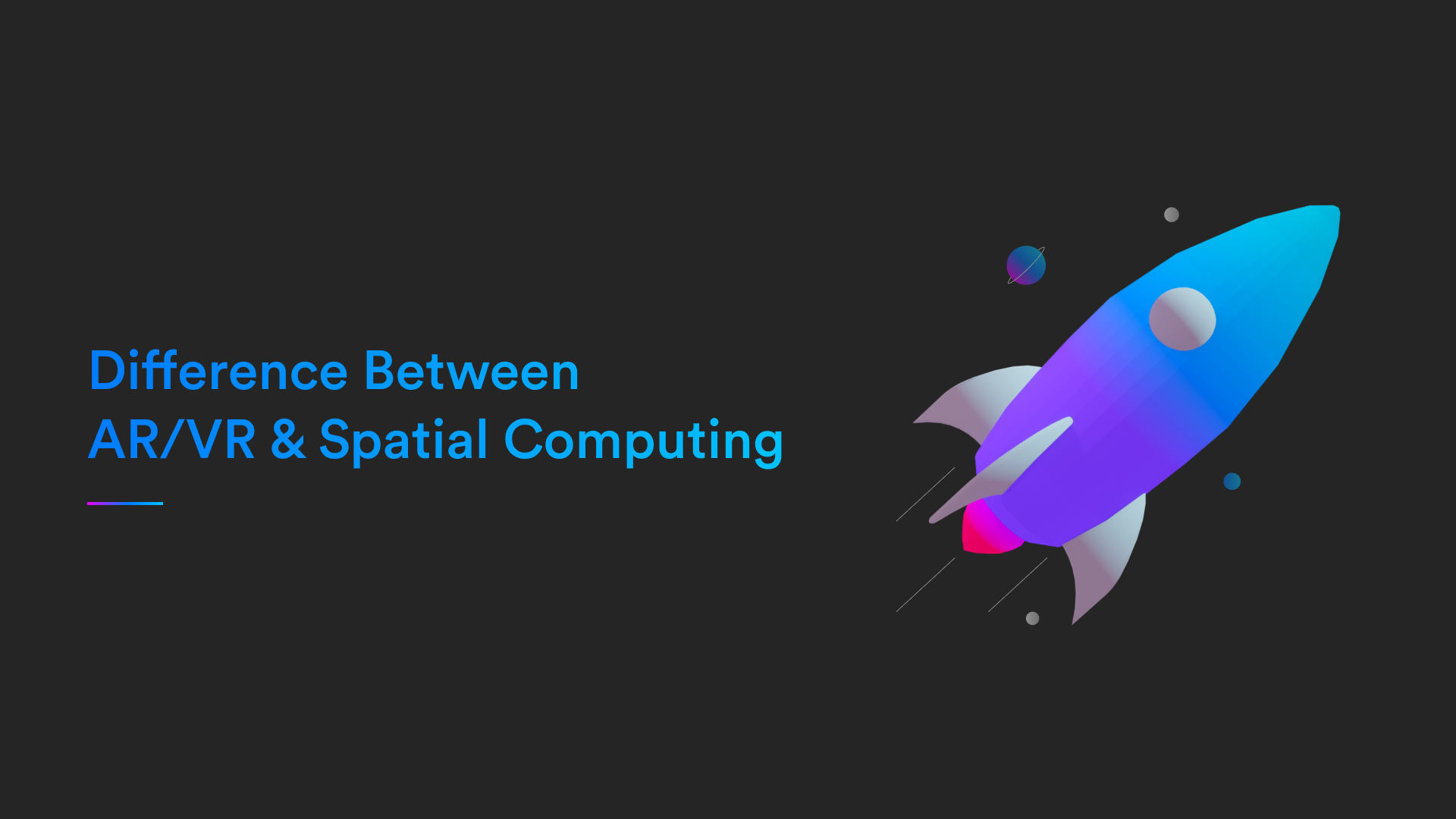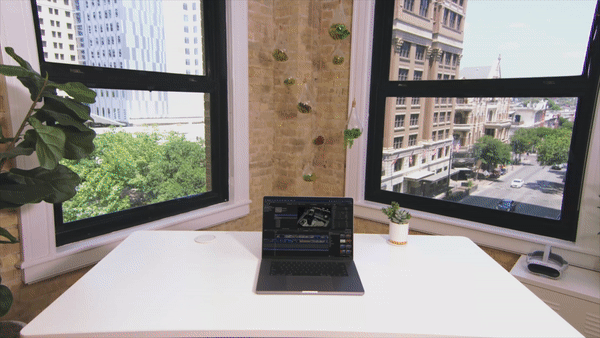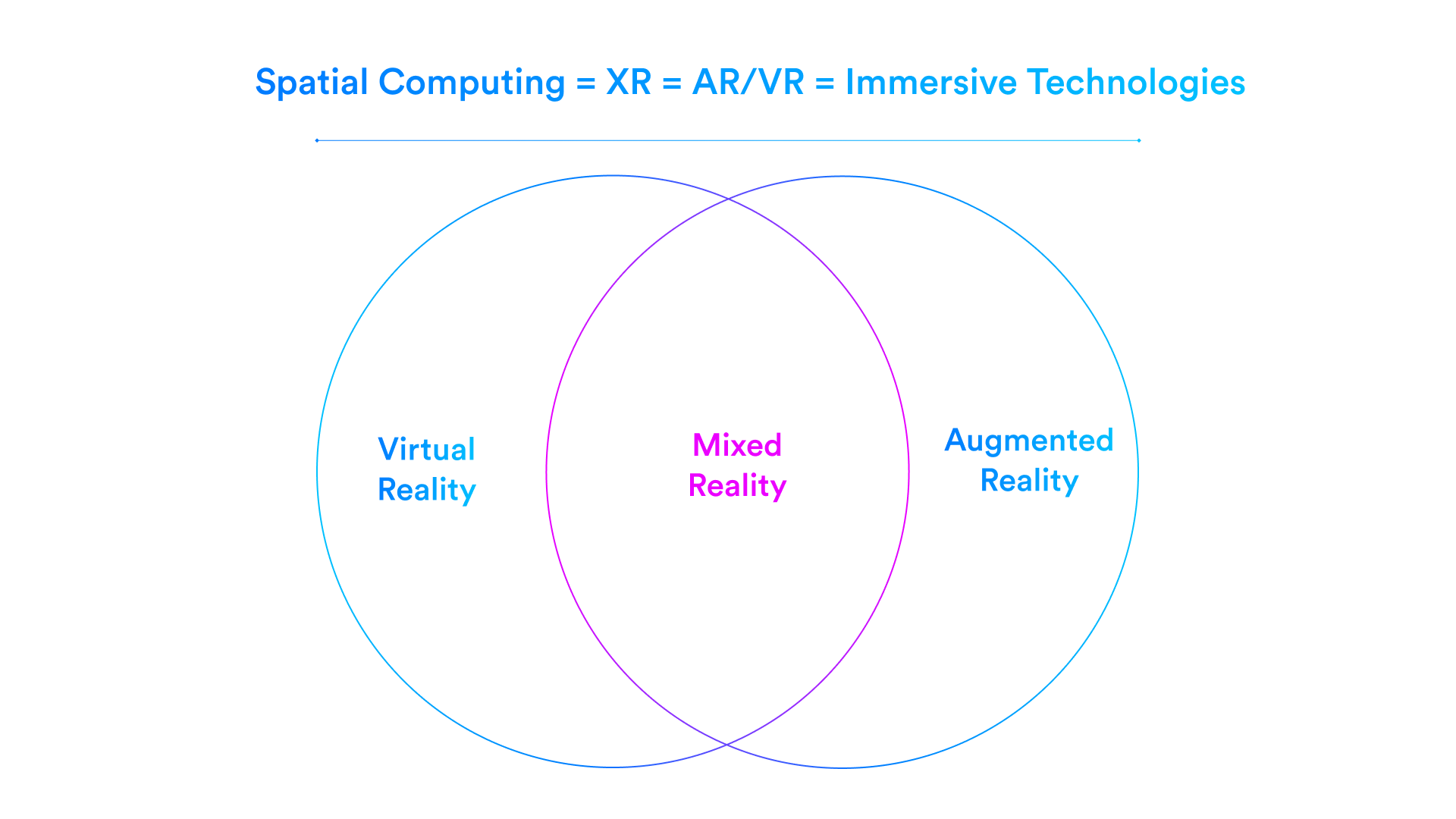Difference Between AR/VR and Spatial Computing

The term spatial computing has risen to prominence in the AR/VR industry following Apple's announcement of the Vision Pro. By using “spatial computing” as the category name, Apple has set a new industry standard for terminology. Prior to this, these technologies were commonly known as:
- AR/VR - augmented reality and virtual reality, implicitly including mixed reality.
- XR - extended reality.
- Immersive technologies.
What is Spatial Computing Exactly?
Spatial computing encompasses technologies that allow humans to engage with computers within a three-dimensional space.
Since the widespread adoption of personal computers in the 1990s and smartphones in the 2010s, users have primarily engaged with computers through two-dimensional, screen-based interfaces. Spatial computing introduces a new medium, enabling more immersive and physically interactive experiences.
Technologies included under the spatial computing umbrella term include:
- Augmented reality.
- Virtual reality.
- Mixed reality.

What Is Augmented Reality and How Does It Differ from Spatial Computing?
Augmented reality(AR) is a technology that overlays digital elements, such as virtual screens, 3D models, or interactive graphics, onto the physical world. A user is still present in their environment but with superimposed digital content.
While augmented reality is a subset of spatial computing, this broader term also encompasses fully immersive experiences known as virtual reality.

What Is Virtual Reality and How Does It Differ from Spatial Computing?
Virtual reality (VR) is a technology that immerses users into a fully simulated virtual environment, entirely isolated from the physical world. In these virtual environments, users can interact with 3D worlds and have experiences ranging from training simulators to interactive gaming.
Virtual reality is one of the subsets of spatial computing, included in this broader field that encompasses technologies that enable interactive experiences within three-dimensional spaces

What Is Mixed Reality and How Does It Differ from Spatial Computing?
Mixed reality(MR) blends aspects of both virtual reality (VR) and augmented reality (AR), creating an environment where physical and virtual elements can interact in real-time. Unlike VR, which immerses users in a completely virtual world, or AR, which overlays digital elements onto the physical world, mixed reality offers a hybrid experience that encompasses both immersive virtual experiences and real-world elements.

Mixed reality(MR) is a type of spatial computing, a broader category that includes VR, AR, and MR. However, it's important to note that standalone VR or AR experiences are not classified as mixed reality, though they all fall under the umbrella of spatial computing experiences.
Wrapping Up
Augmented reality, virtual reality, and mixed reality are all technologies under the spatial computing umbrella. Other terms used interchangeably with spatial computing include AR/VR, extended reality (XR) and immersive technologies.

With the launch of the new generation of spatial computing hardware, we're entering a blue ocean of business opportunities, applying these technologies to new use-cases.
Treeview is a veteran spatial computing development team that has been active in the industry since 2016, working with over 40 clients. If you're a startup or corporation looking for an experienced development team, feel free to reach out!
Until next time.


